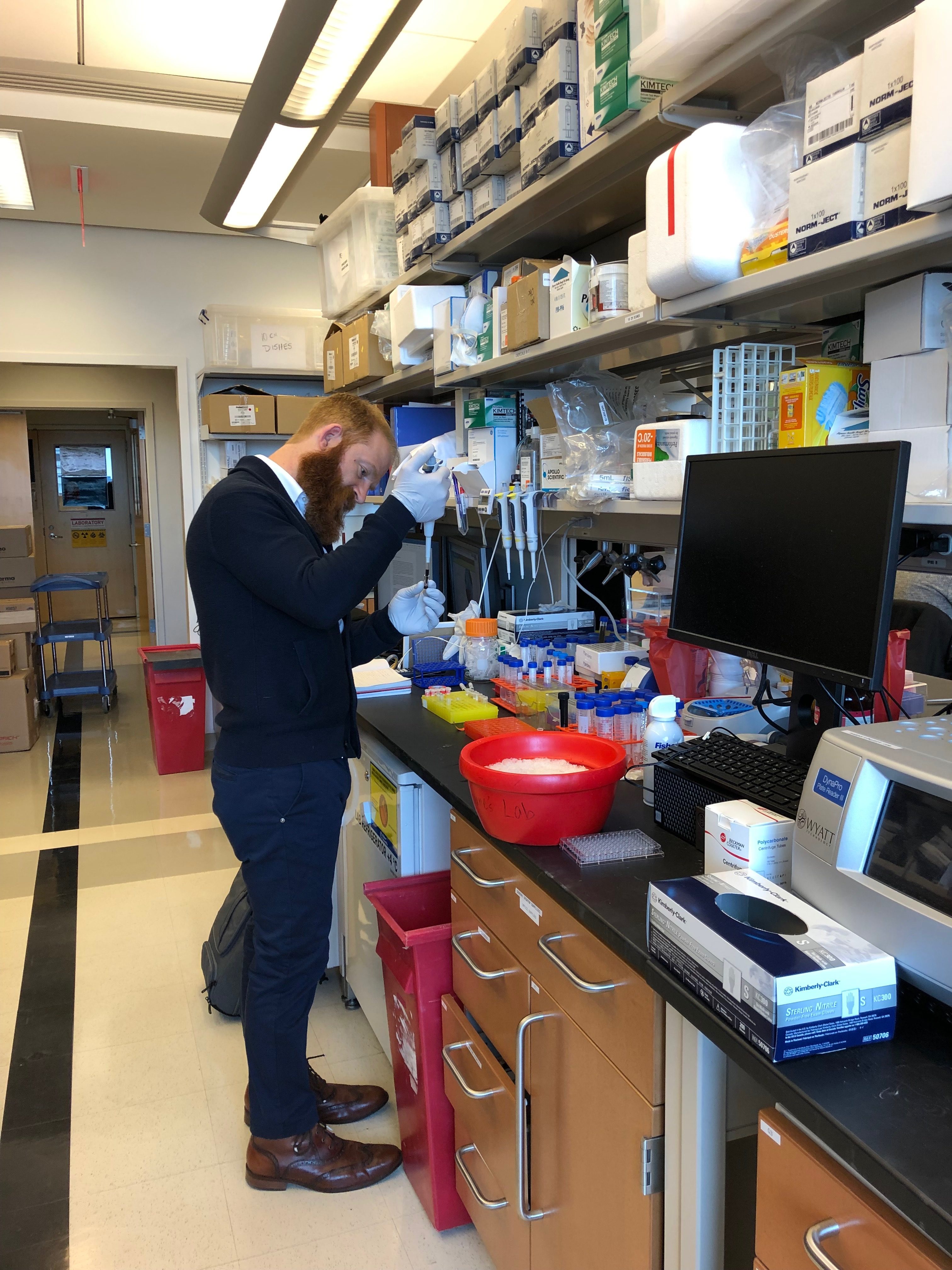
Not every artist can say that his or her work is helping in the fight against cancer. But over the past several years, Joseph Cohen has done just that, working to develop a new, high-tech paint that can be used not only on canvas, but also to detect cancers and medical conditions such as hypertension and diabetes—and his paintings have been shown not only in art galleries, but at scientific conferences.
Sloan Kettering Institute scientist Daniel Heller first suggested that Cohen come work at his lab after seeing the artist’s work, which is often made with pigments that incorporate diamond dust and gold, at the DeBuck Gallery in New York. Cohen’s process, Heller realized, was similar to the work done by a material scientist.
“We initially thought that in working with an artist, we would make art to shed a little light on our science for the public,” Heller told the Memorial Sloan Kettering blog. “But the collaboration actually taught us something that could help us shine a light on cancer.”
One of Joseph Cohen’s paintings incorporating carbon nanotubes photographed in normal light with a standard camera (left) and under yellow light with a near-infrared camera (right). Photo courtesy of Joseph Cohen.
For Cohen, the project was initially intended to develop a new way of art-making, by working with paint at a molecular level. In Heller’s lab, he worked with semi-conducing carbon nanotubes, which Heller was already employing as a diagnostic tool in cancer research, for their optical properties. “They fluoresce in the infrared spectrum,” Cohen says. “That gives artists the opportunity to create paintings in a new spectrum, with a whole new palette of colors.”
Because human eyesight is limited, we can’t actually see infrared fluorescence. But using a special short-wave infrared camera, Cohen is able to document otherwise invisible effects, revealing the carbon nanotube paint’s hidden colors. (Made from stacked sheets of carbon graphene, carbon nanotubes may sound familiar from their use in Vantablack, the blackest substance ever made.)
“What you’re perceiving as a static painting is actually in motion,” Cohen says. “I’m creating paintings that exist outside of the visible experience.”
One of Joseph Cohen’s painting incorporating carbon nanotubes photographed in normal light. Photo courtesy of Joseph Cohen.
Art Supplies—and a Diagnostic Tool
That same imaging technique can be used by doctors looking for microalbuminuria, a condition that causes the kidneys to leak trace amounts of albumin into urine, which is an early sign of of several cancers, diabetes, and high blood pressure.
Cohen helped co-author a paper published this month in Nature Communications about using the nanosensor paint in litmus paper tests with patient urine samples. The study found that the paint, when viewed through infrared light, was able to reveal the presence of albumin based on changes in the paint’s fluorescence after being exposed to the urine sample.
“It’s easy to detect albumen with a dipstick if there’s a lot of levels in the urine, but that would be like looking at stage four cancer,” Cohen says. “This is early detection.”
What’s more, a nanosensor paint can be easily used around the world, even in poor areas that don’t have access to the best diagnostic technologies. Doctors may even be able to view the urine samples using an infrared imaging attachments on their smartphones.
One of Joseph Cohen’s painting incorporating carbon nanotubes shown in both the visible light (left) and in UV fluorescence (right). Photo courtesy of Joseph Cohen.
Paint on Canvas
But developing a carbon nanotube paint that adheres to canvas and to other materials was no easy task. It took Cohen three years of trial and error to discover the right of materials to mix with the nanotubes.
“Imagine having a clump of lapis lazuli,” Cohen says. “It needs to be broken up and made into a paint.” From there, the materials need to be further refined by separating the liquids in a centrifuge, which Cohen compares to mining for gold. “You’re continuing to break up the material and sift out what you want.”
The final step is adding a binder, like linseed oil in oil paint. The resulting paint has incredible potential. Unlike oil paint, carbon nanotubes will not degrade over time—a problem that conservators are facing with the paint used to make some historic works, like Vincent van Gogh’s “Sunflowers.”
Part of the process of making carbon nanotube paint. Photo courtesy of Joseph Cohen.
“They are structurally sound, which is much different than any other artist material,” Cohen says. Further, carbon nanotube paint adds another layer for conservators to test a painting’s authenticity.
The paint has other potential applications: It could be used, for example, in the construction of buildings or bridges in earthquake-prone parts of the world. Were one to hit, a strain in the paint could indicate problems with structural integrity.
The next hurdle, however, is bringing down the cost of production.
“A 1.5 milliliter thing of the paint probably [costs] $100,” Cohen says. “My paintings run from $10,000 to 20,000—which is pretty cheap when you look at the material cost!”